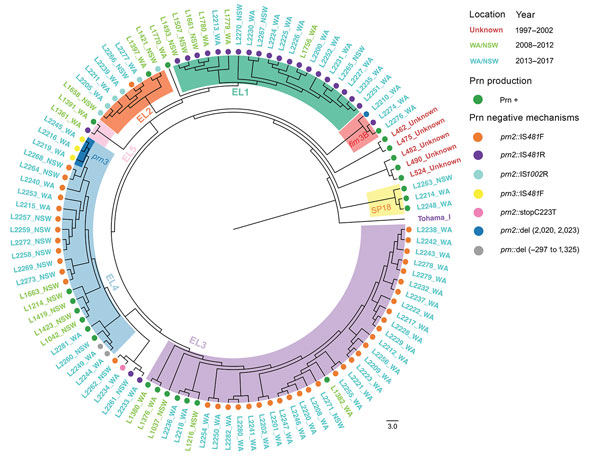Volume 25, Number 6—June 2019
Dispatch
Pertactin-Negative and Filamentous Hemagglutinin-Negative Bordetella pertussis, Australia, 2013–2017
Figure 2

Figure 2. Phylogenomic relationship of 105 Bordetella pertussis epidemic isolates from Australia. The minimum-evolution tree was constructed using 705 SNPs. The isolates are labeled by name (L numbers), followed by states with color to indicate years of isolates. Shaded areas inside circle indicate ELs (EL1–EL5) and branches with isolates belonging to SP18 and those carrying fim3B and prn3 alleles. Prn-positive isolates and different mechanisms of Prn-negative isolates are marked by circles with different colors. Scale bar represents 3 SNPs. EL, epidemic lineage; NSW, New South Wales; Prn, pertactin; SNP, single-nucleotide polymorphism; SP, SNP profile; WA, Western Australia.
Page created: May 20, 2019
Page updated: May 20, 2019
Page reviewed: May 20, 2019
The conclusions, findings, and opinions expressed by authors contributing to this journal do not necessarily reflect the official position of the U.S. Department of Health and Human Services, the Public Health Service, the Centers for Disease Control and Prevention, or the authors' affiliated institutions. Use of trade names is for identification only and does not imply endorsement by any of the groups named above.